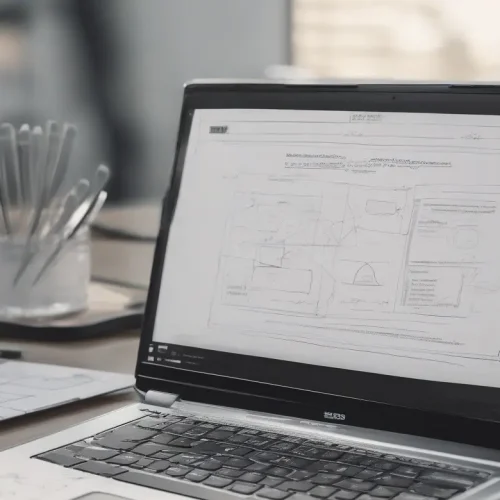What Is WordPress and What Is Its Purpose? An Introduction
If you’ve ever considered building a website, you’ve undoubtedly encountered the name WordPress. But what is WordPress, exactly? At its core, WordPress is a Content Management System (CMS) – a powerful, user-friendly platform that allows you to create, manage, and publish digital content without needing to write a single line of code. It is the single most popular way to build a website, powering over 43% of all sites on the internet, from simple personal blogs to the complex web presences of major brands like NASA and The New Yorker.
Initially launched as a tool for bloggers, WordPress has evolved into an incredibly versatile and flexible system. Whether you want to launch an e-commerce store, a corporate business site, a news portal, a portfolio, or a membership site, WordPress provides the foundation and the tools to bring your vision to life. Its open-source nature means it’s free to use and supported by a massive global community of developers who continuously improve and expand its capabilities.
A Brief History of the WordPress Content Management System
The story of WordPress begins in 2003. Founded by Matt Mullenweg and Mike Little, it was originally created to fill a gap in the market for a sophisticated and well-designed personal publishing system. It started as a simple blogging platform but quickly gained traction due to its ease of use and commitment to open-source principles.
Over the years, through consistent updates and contributions from its vibrant community, WordPress transformed. It shed its identity as just a blogging tool and grew into a full-fledged CMS capable of handling immense complexity. This evolution is driven by its core philosophy of flexibility, allowing users to extend its functionality infinitely through themes and plugins.
How Does WordPress Work? A Look Under the Hood
While users enjoy a simple, intuitive interface, a sophisticated process happens in the background every time someone visits a WordPress website. Understanding this process helps clarify how the platform operates.
A WordPress site is built on two core technologies: PHP (a scripting language) and a MySQL database (for storing information). When you create a page or a blog post, all the text, settings, and metadata are saved in the database. The design elements, functionalities, and core WordPress files are stored separately.
When a visitor types your website’s URL into their browser, this is what happens:
- The browser sends a request to your web server.
- The server uses PHP to run the WordPress software.
- WordPress queries the MySQL database to retrieve the content for the requested page (like your text, images, and post titles).
- WordPress then assembles this content into an HTML file using your theme’s templates.
- Finally, the server sends this complete HTML page back to the visitor’s browser, where it is displayed as a cohesive website.
This dynamic process makes it incredibly efficient to manage large amounts of content and make site-wide changes by simply editing a single template file.
The Crucial Distinction: WordPress.org vs. WordPress.com
One of the most common points of confusion for newcomers is the difference between WordPress.org and WordPress.com. While they share a name and are related, they serve different needs and offer vastly different levels of control.
WordPress.org: The Self-Hosted Powerhouse
Often called “the real WordPress,” WordPress.org is the home of the free, open-source WordPress software. This is the version you download and install on your own web hosting account. It offers complete and total control over every aspect of your website.
- Full Control: You have the freedom to install any theme or plugin you want, from any source. You can modify the underlying code to create completely custom functionality.
- Monetization Freedom: You can run any type of ads, affiliate links, or e-commerce platform without restrictions.
- Ownership: You own all your data and have full control over it. You are responsible for your own backups and security.
- Cost: While the software is free, you must pay for a domain name (around $10-20/year) and a web hosting plan (starting from a few dollars per month).
This is the recommended choice for any serious business, e-commerce store, or professional who wants to build a scalable and fully customized online presence.
WordPress.com: The Hosted, All-in-One Service
WordPress.com is a for-profit hosting service that uses the WordPress software. It offers a simplified, all-in-one package where the hosting, security, and updates are managed for you. It operates on a freemium model.
- Ease of Use: It’s incredibly easy to get started. You just sign up for an account, and your site is live. There’s no need to manage a hosting provider.
- Maintenance-Free: The technical team at WordPress.com handles all updates, backups, and security, freeing you to focus solely on content.
- Limitations: The free plan is very restrictive. You cannot use a custom domain name (you get a `yourname.wordpress.com` address), storage is limited, and WordPress.com places its own ads on your site.
- Cost: To unlock features like custom domains, plugin installation, and e-commerce capabilities, you must upgrade to their paid plans, which can become more expensive than self-hosting with WordPress.org.
This option is best suited for hobby bloggers, personal journals, or users who prioritize convenience over control and customization.
What Types of Websites Can You Build with WordPress?
Thanks to its extensible architecture, WordPress is not limited to any single type of website. Its versatility is its greatest strength. Here are just a few examples of what you can create:
- Blogs and Personal Websites: The original purpose of WordPress, it remains the best platform for blogging with robust features for content creation and management.
- Business and Corporate Websites: WordPress is perfect for creating professional websites to showcase services, company information, and build brand authority.
- E-commerce Stores: With powerful plugins like WooCommerce, you can build a fully functional online store to sell physical or digital products, managing inventory, payments, and shipping with ease.
- Portfolios: Artists, photographers, and designers can create stunning online portfolios to showcase their work using visually focused themes and gallery plugins.
- News and Magazine Sites: Its strong content management capabilities make WordPress ideal for online publications that need to organize and display a large volume of articles.
- Membership Sites: You can create exclusive content and build a community by restricting access to paying members using specialized membership plugins.
- Forums and Online Communities: With plugins like bbPress, you can build a thriving online forum for users to engage in discussions.
- Non-Profit and Charity Websites: WordPress allows non-profits to raise awareness, collect donations, and communicate with supporters effectively.
The Building Blocks of WordPress: Themes and Plugins
The true power of WordPress lies in its two fundamental components: themes and plugins. These tools allow you to control the look and functionality of your site without touching any code.
Themes: Defining Your Website’s Design
A WordPress theme is a collection of templates and stylesheets that dictates the appearance and visual layout of your website. It controls everything from the color scheme and typography to the page layouts. You can change your entire website’s look with a single click by activating a new theme.
There are thousands of themes available:
- Free Themes: The official WordPress.org theme repository offers thousands of free themes that are vetted for quality and security. These are great starting points for new websites.
- Premium Themes: Paid themes, available from marketplaces like ThemeForest or independent shops, typically offer more advanced features, greater design flexibility, and dedicated customer support.
Plugins: Extending Your Website’s Functionality
If themes are the look of your site, plugins are the functionality. Plugins are pieces of software you can install to add new features or extend existing ones. The official WordPress.org plugin directory contains over 60,000 free plugins that can do almost anything you can imagine.
Popular plugin categories include:
- SEO (Search Engine Optimization): Plugins like Yoast SEO or Rank Math help you optimize your content to rank higher in search engines.
- Security: Tools like Wordfence or Sucuri protect your site from malware and hackers.
- Contact Forms: Plugins like WPForms allow you to easily create and add contact forms to your site.
- Performance: Caching plugins like W3 Total Cache or WP Rocket can dramatically speed up your website.
- E-commerce: WooCommerce transforms your site into a powerful online store.
Why Choose WordPress? The Key Advantages
With other website builders available, why does WordPress remain the dominant choice? The reasons are clear and compelling.
- It’s Free and Open-Source: You have the freedom to use, modify, and distribute the software as you see fit, without any licensing fees.
- Unmatched Flexibility: From a simple blog to a global e-commerce enterprise, WordPress can scale to meet your needs.
- Massive Community Support: With millions of users and developers worldwide, it’s easy to find tutorials, guides, and support in official forums or dedicated communities.
- SEO-Friendly by Design: WordPress is built with clean, standard code that search engines love. With the help of SEO plugins, you have granular control over your on-page optimization.
- You Have Full Ownership: With self-hosted WordPress.org, you own your website and all its data. You’re never locked into a proprietary platform that can change its rules or prices.
Getting Started with Your WordPress Website
Launching your own WordPress site is a straightforward process. Here are the basic steps:
- Choose a Domain Name: This will be your website’s unique address on the internet (e.g., asaradco.com).
- Select a Web Hosting Provider: This is where your website’s files will be stored. Most hosts offer a simple one-click WordPress installation.
- Install WordPress: Use your host’s installer or do it manually. It’s a quick and simple process.
- Pick a Theme: Select a theme from the WordPress dashboard that matches your brand and vision.
- Install Essential Plugins: Add plugins for security, SEO, contact forms, and any other specific functionality you need.
- Start Creating Content: Begin adding pages and posts to build out your website.
Conclusion: The Enduring Power of WordPress
WordPress has firmly established itself as the world’s leading Content Management System for good reason. It strikes the perfect balance between user-friendliness for beginners and deep functionality for advanced developers. Its open-source philosophy has fostered a global community that ensures the platform is constantly evolving, remaining secure, and pushing the boundaries of what a website can do. Whether you are a small business owner, a creative professional, or an aspiring blogger, WordPress provides a stable, scalable, and powerful foundation to build your digital future.






